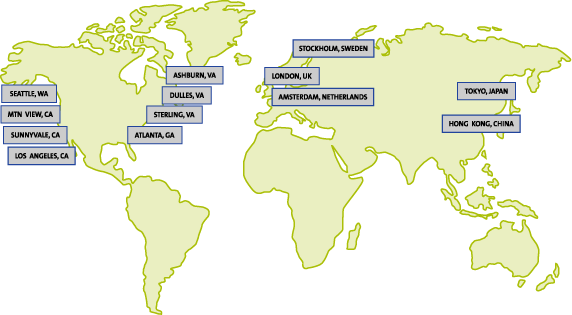
Name Resolution
DNS (Domain Name System)
A system that converts domain names into IP addresses.
Gobal and highly distributed network service that resolves strings of letters into IP adresse for you.
DNS lets organizations decide, if you're in the region, resolve the domain name to this IP. If you're in this other region, resolve this domain to this other IP.
Name Resolution
Process of using DNS to turn a domain name into IP addresse.
Caching and recursive names servers
Provided by an ISP or your local network.
Purpose is to store domain name lookups for a certain amount of time.
TTL (Time to live)
Configured by owner of a domain name for how long a name server is allowed to cache in entry before it should discard it and perform a full resolution again.
Full recursive resolution.

-
Contact a root named servers. They are responsible for directing queries toward the appropriate TLD name server.
-
The root server will respond to a DNS lookup with the TLD name server that should be queried.
-
TLD name servers will response again with a redirect, this time informing
the computer performing the name lookup with that authoritative name server to contact. -
DNS lookup could be redirected at the authoritative server for which would finally provide the actual IP of the server in question.
Anycast
A technique that is used to route traffic to different destinations depending on factors like location, congestion or link health.
TLD server
TLD stands for top level domain and represents the top of the
hierarchical DNS naem resolution system.
A TLD is the lastpart of any domain name.
.com, .org, .io etc...
Authoritative name server
They are responsible for the last two parts of any domain name which is the resolution at whicvh a single organization may be responsible for DNS lookups.
DNS and UDP
DNS is a great example of an application layer service that uses UDP for the transport layer instead of TCP.
A single request and its response can usually fit inside of a single UDP datagram.
Process
-
The original computer sends a UDP packet to its local name sever on port 53 asking for the IP for food.com.
-
The local name server acts as a recursive server and sends up a UDP packet to the root server which sends a response containing the proper TLD name server.
-
The recursive name server sends a packet to the TLD server and receives back a response containing the correct authoritative server.
-
The recursive name server sends its final request to the authoritative name server which sends a response containing the IP for food.com.
when DNS lookup uses TCP, it sends 40 packets total
but when it uses UDP , it sends only 8 packets.
What if response from DNS name server is too large?
if response is too large for a single UDP datagram,
the DNS name server would response with a packet explaining that the response is too large.
The DNS client would then establish a TCP connection in order to perform the lookup.

Yes, especially in the Greek language you can find lots of names that mean death or hatred.